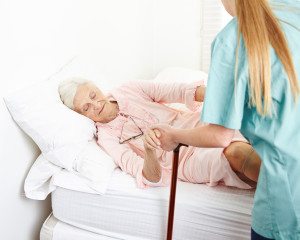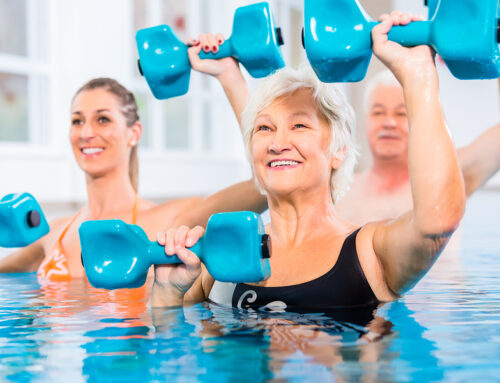Home Health Care in Mt. Laurel, NJ
 When a senior who is receiving elderly care spends most of their time in bed or a wheelchair, bed sores, or pressure sores, may develop. Bed sores are wounds to the skin caused by prolonged pressure on the skin. They usually develop on boney places on the body, such as the heels, hips, tailbone, or ankles. They can be extremely painful, are difficult to heal, and can be an indication of a much bigger health issue. People need to keep their bodies moving in order to prevent bed sores from developing; even elders who have mobility problems should be constantly shifting their bodies in order to prevent these skin injuries from occurring. Knowing as much as you can about these skin wounds and how they can be prevented will keep your loved one from getting the painful bed sores.
When a senior who is receiving elderly care spends most of their time in bed or a wheelchair, bed sores, or pressure sores, may develop. Bed sores are wounds to the skin caused by prolonged pressure on the skin. They usually develop on boney places on the body, such as the heels, hips, tailbone, or ankles. They can be extremely painful, are difficult to heal, and can be an indication of a much bigger health issue. People need to keep their bodies moving in order to prevent bed sores from developing; even elders who have mobility problems should be constantly shifting their bodies in order to prevent these skin injuries from occurring. Knowing as much as you can about these skin wounds and how they can be prevented will keep your loved one from getting the painful bed sores.
Symptoms
Bed sores fall into one of four categories:
Stage I: When a bed sore begins to develop, people with lighter skin will notice redness on their skin, while people with darker skin will have some discoloration on their skin. The skin is not broken, but is firm, painful, warm, tender, or cool compared to the rest of the skin.
Stage II: It will look like a blister filled with fluid or one that has been ruptured and may be shallow and pink or red. At this stage, the epidermis, or outer layer of the skin, and part of the dermis, or underlying layer of the skin, is damaged or lost.
Stage III: The area becomes a crater-like deep wound that may expose some fat. The bottom of the wound will most likely have some yellowish dead tissue and may damage layers of healthy skin.
Stage IV: Muscle, tendons, or a bone may be exposed because of the large amount of tissue that has been damaged or lost. The bottom of the sore also dead tissue that is yellow, dark, or crusty.
If the loved one you care for at home uses a wheelchair, these sores will most likely be found on the tailbone, shoulder blades, spine, or back of arms and legs that rest against the chair. Those elders who spend a majority of time in their bed may notice bed sores on the back or sides of their head, rims of their ears, shoulders or shoulder blades, hip, lower back, tailbone, heels, ankles, and skin behind the knees.
Prevention
Fortunately, bed sores are much easier to prevent than they are to treat. Your loved one’s doctor can also give you some ideas to prevent these ulcers from developing, but here are some simple things that can be done to keep your loved one from getting them.
Helping elders in wheelchairs:
- Use a cushion that will relieve the pressure.
- Shift weight frequently. Your loved one may need your help doing this as about every 15 minutes.
- Consider getting a specialized wheelchair that can tilt, which may relieve the pressure off of your loved one’s skin.
Helping elders on bed rest:
- Protect the bony areas with cushions
- Use a special mattress with specialized cushions and padding that will relieve pressure.
- Your loved one should re-position themselves every two hours.
Bed sores can be very serious and should be brought to the doctor’s attention as soon as you notice anything abnormal on your loved one’s skin. By knowing how they can be prevented, you should be able to keep your loved one from getting these painful ulcers.
Source
Mayo Clinic. “Bedsores (pressure sores).”
For all of your home health care needs in Mt. Laurel, NJ and the surrounding areas call and talk to us at Home to Stay Healthcare Solutions (856) 321-1500.







